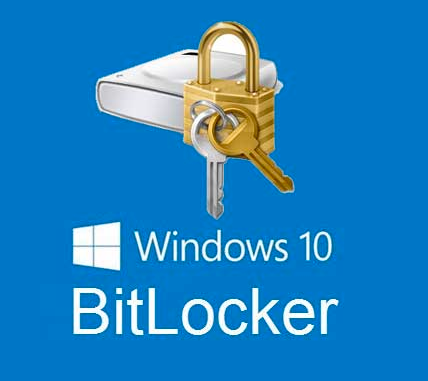BitLocker may be a full volume encryption feature introduced with Microsoft Windows versions beginning with Windows Vista. it's designed to guard data by providing encryption for entire volumes. By default, it works with the AES encryption algorithm in Cipher Block Chaining (CBC) or XTS mode with a 128-bit or 256-bit key. CBC isn't used over the entire disk; it's applied to every individual sector.
 |
| Windows 10 BitLocker enable Encryption Method |
when you store sensitive data on your computer, it's crucial that you simply take the required steps to guard that data (especially if you employ a laptop or tablet). this is often not just to prevent the NSA from accessing your files, but it's more about preventing your private data from falling into the incorrect hands within the slightest change you lose your device, or it gets stolen.
One way you'll protect your data is by using encryption. Briefly, encryption is essentially the method of creating any sort of data unreadable by anyone without proper authorization. If you employ encryption to scramble your data, it'll still be unreadable even after sharing it with people. In other words, only you with the proper encryption key can make the info readable again.
Windows 10, almost like previous versions, includes BitLocker Drive Encryption, a feature that permits you to use encryption on your PC's disk drive and on removable drives to stop prying eyes from snooping into your sensitive data.
Things you should know before diving into this
- BitLocker Drive Encryption only works on Windows 10 Pro and Windows 10 Enterprise.
- For best results, your computer must be implemented with a Trusted Platform Module (TPM) chip. This is a unique microchip that allows your device to maintain advanced security features.
- You can use BitLocker without a TPM chip by applying software-based encryption, but it needs some extra steps for additional authentication.
- Your computer's BIOS must support TPM or USB devices while startup. If this isn't the case, you'll need to verify your PC manufacturer's support website to perceive the latest firmware update for your BIOS before attempting to set up BitLocker.
- Your PC's hard drive must carry two partitions: a system partition, which carries the necessary files to start Windows, and the partition with the operating system. If your computer doesn't satisfy the requirements, BitLocker will produce them for you. Additionally, the hard drive partitions must be formatted with the NTFS file system.
- The process to encrypt a whole hard drive isn't difficult, but it's time-absorbing. Depending on the amount of data and size of the drive, it can take a very long time.
- Make sure to retain your computer connected to a continuous power supply during the whole process.
How to turn on BitLocker on Windows Operating System
- Connect your removable storage device to your computer.
- Go to “Control Panel” and select “BitLocker Drive Encryption”.
- Select the removable storage drive you want to encrypt and then click “Turn on BitLocker”.
- Wait for a while for BitLocker initialization to complete.
- Select “Use a password to unlock the drive” and define your password. Re-type the password to confirm and then click “Next”.
- Select where you want to save the recovery key which is needed to access the drive in case you have forgotten your password. It is NOT recommended to use the “Save to your cloud domain account” option as it requires your desktop PC to join the Microsoft Azure Active Directory which is not currently provisioned. Instead, you are recommended to use the “Save to a file” option, and store the recovery key in a secure place as it is your last resort of unlocking the drive. After saving your recovery key, click “Next”.
- Choose how you want to encrypt the drive. If you are using a new drive, select “Encrypt used disk space only”. If you are using a drive with data, select “Encrypt entire drive”. Then click “Next”.
- Select the encryption mode. If you will use the encrypted drive on older versions of Windows, select “Compatible mode”. If you will only use the drive on Windows 10 machine, select “New encryption mode” which is a better encryption method. Then click “Next”.
- Click “Start encrypting” when ready.
- The encryption process may take some time, depending on various factors including the speed of the storage device, performance of the PC, etc. (Microsoft estimates the encryption speed to be around 500MB/min). Interrupting the process may result in data corruption/lost.
- Click “Close” when the encryption is completed.
The next time you connect your encrypted drive to the computer, enter your password to unlock the drive.
Use a Recovery Key to Unlock the Drive
In case you have forgotten your unlock password or for whatever reasons you cannot access the encrypted drive, you can unlock the drive using the recovery key.
- Right-click the encrypted drive from file explorer, then click “Unlock Drive”.
- Click “More options” in the pop-up window.
- Make sure “Automatically unlock on this PC” is checked and click “Enter recovery key”.
- Key in the recovery key and click “Unlock”.
- The drive is unlocked.
Change Unlock Password
- Unlock your encrypted drive with the existing password.
- Go to Control Panel and then select “BitLocker Drive Encryption”.
- Locate your encrypted drive and click “Change password”.
- Key in your old password. Define a new password and re-type it to confirm. Then click “Change password”.
- The password is changed. Click “Close”.























0 Comments